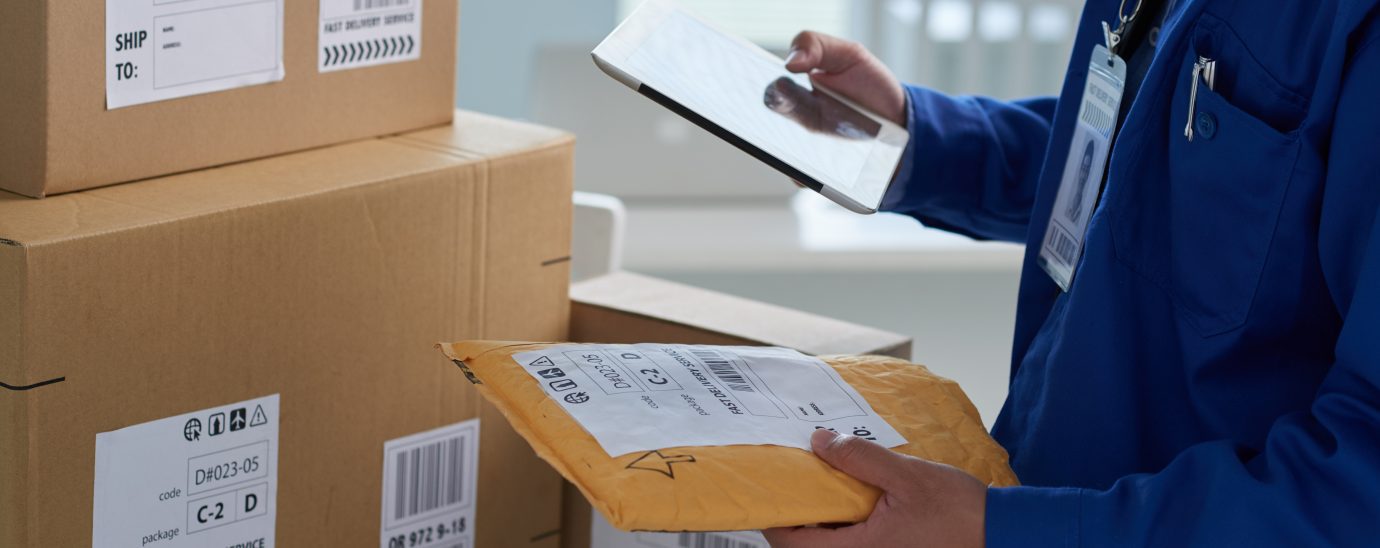How businesses can overcome holiday shipping challenges this year

Devin Partida, Editor-In-Chief at ReHack, looks at how businesses can overcome holiday shipping challenges this year.
The past couple of years have been challenging for businesses across all industries worldwide. With the ongoing COVID-19 pandemic, it’s no surprise that the business world is still trying to recover from its initial losses.
When some retailers and other brick-and-mortar stores had to close their doors temporarily or permanently, the economy faced an unprecedented crisis. The pandemic has sparked a global recession that hasn’t been as deep since World War II.
One result of the pandemic has been global supply chain struggles, like product shortages and other disruptions. This comes at a time when holiday shopping figures are expected to increase. For example, the National Retail Federation (NRF) estimates that holiday sales for 2021 are expected to increase by 8.5-10.5% over 2020.
Because of these uncertainties, all types of businesses must be proactive. Let’s explore some potential solutions to the ongoing shipping challenges for this upcoming holiday season.
5 Ways to conquer holiday shipping obstacles
Businesses will need to find innovative and unique strategies to solve the influx of shipping challenges this holiday season. Whether it’s limited carrier capacities or port congestion on the west coast causing long waiting times, it’ll take some extra grit to get through this holiday season.
Below, we’ll explore ways your company can overcome the expected holiday shipping challenges as the season approaches.
1. Leverage Supply Chain Transparency
The concept of supply chain transparency is fairly new but demands the attention of retailers across various industries. Companies are under high pressure to deliver on and exceed customer expectations.
The reputational cost of failing to meet these ever-changing expectations is often high, which is one primary reason why companies need to leverage technology to achieve supply chain transparency.
For example, using emerging technologies like blockchain has proven successful in terms of supply chain management. Be willing to consider adopting blockchain or other new technologies to improve transparency so you know where, when, and how long it’ll take to receive products.
2. Effectively communicate with suppliers and carriers
Supply chain disruptions are inevitable. It’s rare for companies to experience little to no interruption considering the shortages and packed ports of the current shipping industry. To mitigate the risk of letting one disruption fester into an unmanageable situation, keeping lines of communication open is necessary.
Speaking directly and frequently to suppliers and carriers will help make disruptions less impactful on your business. Communicating with your partners in real-time will allow you to take faster action when faced with supply chain disruptions. There are rarely any downsides to allowing a free flow of information, so prioritize it this holiday season. This is especially significant for e-commerce businesses.
3. Use demand forecasting software
Using historical sales data to forecast future sales is something every business can benefit from. Past sales data often tells about what customers will likely demand in the future. Be sure to take the impact of any supply chain disruptions into account when using demand forecasting software.
There are plenty of forecasting technologies available on the market, but make sure to identify your business’ needs before investing in one. Some of the benefits of demand forecasting software include higher levels of efficiency, data analysis, seamless collaboration, and fewer stock shortages.
4. Offer various product delivery options for customers
More and more brick-and-mortar stores are offering a variety of product delivery options for their customers. For example, a popular delivery option is the buy online pick up in-store (BOPIS) method. When customers have more options during this uncertain holiday season, they will be more likely to come for return purchases and help boost your sales.
The ultimate goal in having a profitable season this year is to offer these various pickup options. Take advantage of the emerging trend of curbside pickup, which helps achieve more efficiency for your customers and business and keeps employees safe during the current public health crisis.
5. Keep your customers informed about potential delays
It’s also suggested that you encourage your customers to shop and order their products online early to avoid potential shipping delays. This can help adjust your customers’ expectations and keep your reputation intact.
If you alert your customers to delays and keep them in the loop, you’re less likely to face backlash during the holidays, something no retailer wants to be subjected to.
Whether you’re a small or large business, trying to take advantage of this critical sales period will come with obstacles. The companies that work hard by employing viable solutions will outperform their competition and give them a market edge.
As multiple new retail technologies emerge, such as artificial intelligence (AI) and machine learning (ML), now is the time to invest in them to improve your operations and deliver on customer expectations.
Conquer the 2021 holiday deason
No business is immune to the shipping challenges that must be faced this year. The holiday season is expected to break records, and in terms of sales, you must prepare for an influx of new customer demands. To find success this season, be sure to refer to some of the solutions above.
The past couple of years have been challenging for businesses across all industries worldwide. With the ongoing COVID-19 pandemic, it’s no surprise that the business world is still trying to recover from its initial losses.
When some retailers and other brick-and-mortar stores had to close their doors temporarily or permanently, the economy faced an unprecedented crisis. The pandemic has sparked a global recession that hasn’t been as deep since World War II.
One result of the pandemic has been global supply chain struggles, like product shortages and other disruptions. This comes at a time when holiday shopping figures are expected to increase. For example, the National Retail Federation (NRF) estimates that holiday sales for 2021 are expected to increase by 8.5-10.5 percent over 2020.
Because of these uncertainties, all types of businesses must be proactive. Let’s explore some potential solutions to the ongoing shipping challenges for this upcoming holiday season.
5 Ways to Conquer Holiday Shipping Obstacles
Businesses will need to find innovative and unique strategies to solve the influx of shipping challenges this holiday season. Whether it’s limited carrier capacities or port congestion on the west coast causing long waiting times, it’ll take some extra grit to get through this holiday season.
Below, we’ll explore ways your company can overcome the expected holiday shipping challenges as the season approaches.
1. Leverage supply chain transparency
The concept of supply chain transparency is fairly new but demands the attention of retailers across various industries. Companies are under high pressure to deliver on and exceed customer expectations.
The reputational cost of failing to meet these ever-changing expectations is often high, which is one primary reason why companies need to leverage technology to achieve supply chain transparency.
For example, using emerging technologies like blockchain has proven successful in terms of supply chain management. Be willing to consider adopting blockchain or other new technologies to improve transparency so you know where, when, and how long it’ll take to receive products.
2. Effectively communicate with suppliers and carriers
Supply chain disruptions are inevitable. It’s rare for companies to experience little to no interruption considering the shortages and packed ports of the current shipping industry. To mitigate the risk of letting one disruption fester into an unmanageable situation, keeping lines of communication open is necessary.
Speaking directly and frequently to suppliers and carriers will help make disruptions less impactful on your business. Communicating with your partners in real-time will allow you to take faster action when faced with supply chain disruptions. There are rarely any downsides to allowing a free flow of information, so prioritize it this holiday season. This is especially significant for e-commerce businesses.
3. Use demand forecasting software
Using historical sales data to forecast future sales is something every business can benefit from. Past sales data often tells about what customers will likely demand in the future. Be sure to take the impact of any supply chain disruptions into account when using demand forecasting software.
There are plenty of forecasting technologies available on the market, but make sure to identify your business’ needs before investing in one. Some of the benefits of demand forecasting software include higher levels of efficiency, data analysis, seamless collaboration, and fewer stock shortages.
4. Offer various Product delivery options for customers
More and more brick-and-mortar stores are offering a variety of product delivery options for their customers. For example, a popular delivery option is the buy online pick up in-store (BOPIS) method. When customers have more options during this uncertain holiday season, they will be more likely to come for return purchases and help boost your sales.
The ultimate goal in having a profitable season this year is to offer these various pickup options. Take advantage of the emerging trend of curbside pickup, which helps achieve more efficiency for your customers and business and keeps employees safe during the current public health crisis.
5. Keep your customers informed about potential delays
It’s also suggested that you encourage your customers to shop and order their products online early to avoid potential shipping delays. This can help adjust your customers’ expectations and keep your reputation intact.
If you alert your customers to delays and keep them in the loop, you’re less likely to face backlash during the holidays, something no retailer wants to be subjected to.
Whether you’re a small or large business, trying to take advantage of this critical sales period will come with obstacles. The companies that work hard by employing viable solutions will outperform their competition and give them a market edge.
As multiple new retail technologies emerge, such as artificial intelligence (AI) and machine learning (ML), now is the time to invest in them to improve your operations and deliver on customer expectations.
READ MORE:
- Blockchains in supply chains – is it the right solution?
- 4 things that blockchain is useful for other than crypto
- The importance of digital transformation within e-commerce
- Black Friday: Last chance saloon
Conquer the 2021 Holiday Season
No business is immune to the shipping challenges that must be faced this year. The holiday season is expected to break records, and in terms of sales, you must prepare for an influx of new customer demands. To find success this season, be sure to refer to some of the solutions above.
For more news from Top Business Tech, don’t forget to subscribe to our daily bulletin!
